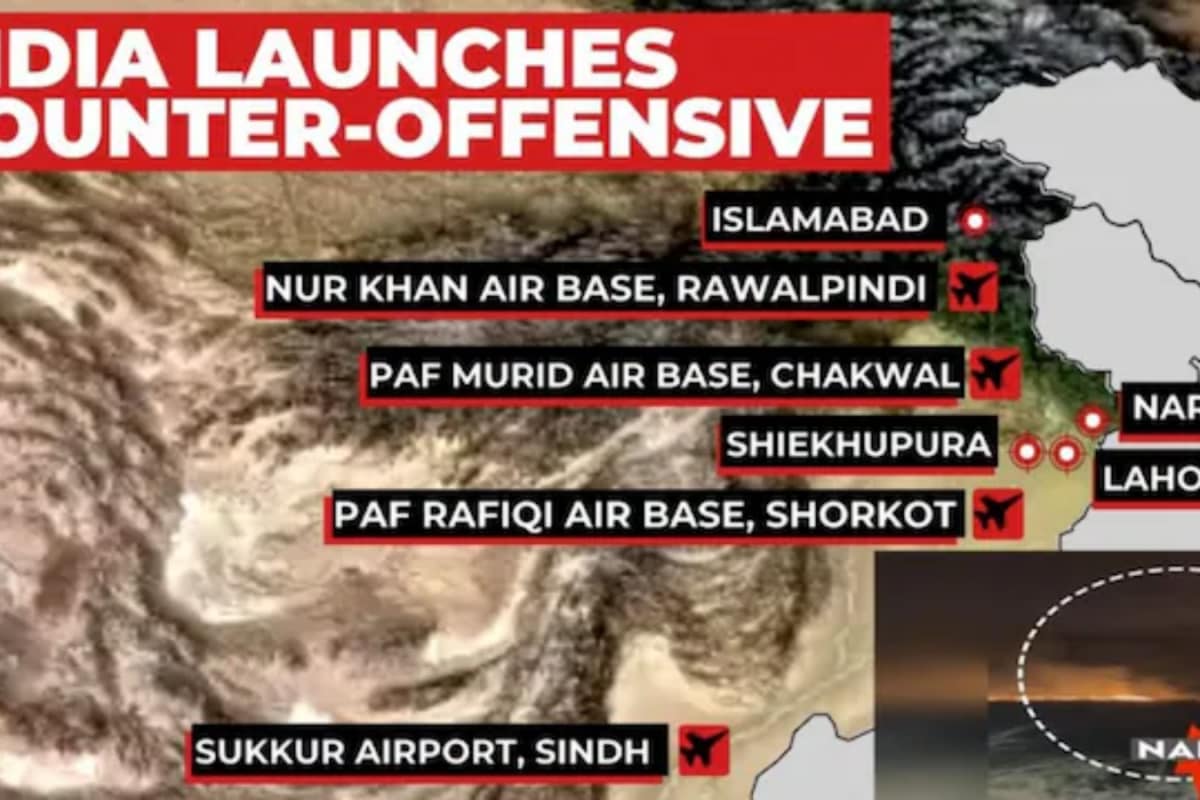

Following four days of escalating military exchanges, including precision missile strikes and artillery battles across the Line of Control (LoC), India and Pakistan agreed to a ceasefire effective from the evening of May 10, 2025. However, the truce proved fragile, with reports of ceasefire violations emerging within hours.
The agreement followed a series of intense events that began on Friday, May 6, 2025. According to government sources, at dawn on May 10, the Indian Air Force (IAF) launched BrahMos-A cruise missiles targeting key Pakistan Air Force (PAF) bases. The first confirmed impacts were at Chaklala near Rawalpindi and Sargodha in Punjab province, both installations holding strategic aviation and logistics value for the Pakistan military. Confirmation of strikes on additional bases in Pakistan and Pakistan-occupied Kashmir (PoK) – Jacobabad, Bholari, and Skardu – came later after damage assessments.
Shortly after the strikes, Indian intelligence agencies detected high alert messages flashing across Pakistani defense networks, indicating a belief that India might next target Pakistan's nuclear command and control infrastructure.
In response to Pakistan's earlier actions, India launched a counter-offensive, targeting nine airbases and two radar sites. Pakistan had initiated Operation Bunyan al-Marsoos, deploying F-16s, JF-17s, and precision munitions across over 26 Indian locations, leading to limited damage. In retaliation, India executed Operation Sindoor, causing extensive damage to key Pakistani military infrastructure using BrahMos, Scalp, and Spice-2000 missiles.
The Indian strikes reportedly caused significant damage to 11 Pakistani air bases. The sites targeted included Rafiqui (Shorkot, Jhang), Murid (Chakwal), Nur Khan (Chaklala, Rawalpindi), Rahim Yar Khan, Sukkur and Chunian (Kasur). The air bases in Skardu, Bholari, Jacobabad and Sargodha also suffered extensive damage. Radar sites at Pasrur and Sialkot were targeted using precision munitions. It is believed that air-launched precision weapons such as the HAMMER and the SCALP, and the BrahMos supersonic cruise missiles were used in the attacks. The use of the BrahMos missile in the attack would mark the first-ever demonstration of the cruise missile in actual combat.
India's military conveyed that the move was a proportional retaliation for the ceasefire violation by Pakistan. Pakistan, however, accused Indian missiles of striking three airbases and responded with Operation Iron Wall. Pakistan's claims about strikes on Indian defense assets and mosques were rejected by the Indian military as disinformation.
Hours after the ceasefire announcement, Pakistani drones were sighted and intercepted in various locations in Jammu and Kashmir, including Srinagar, and parts of Gujarat. India stated that Pakistan had violated the ceasefire and that the armed forces were giving an "adequate and appropriate response". Foreign Secretary Vikram Misri stressed that India takes "very, very serious notice of these violations".
The incident has sparked widespread debate and raised concerns about escalating military confrontations between the two nuclear-armed neighbors. The use of the BrahMos Air-Launched Version (BMAV) in a cross-border incident, allegedly targeting a suspected Indian drone over Gujranwala, Punjab, Pakistan, has also been reported.
In light of the events, the deployment of the BrahMos missile by India is seen as a grave escalation and shows the sophistication of India's military technology. The attacks were precision-striked to target command centers, UAV bases, radar stations, and weapon stores with minimum collateral damage to civilian casualty.